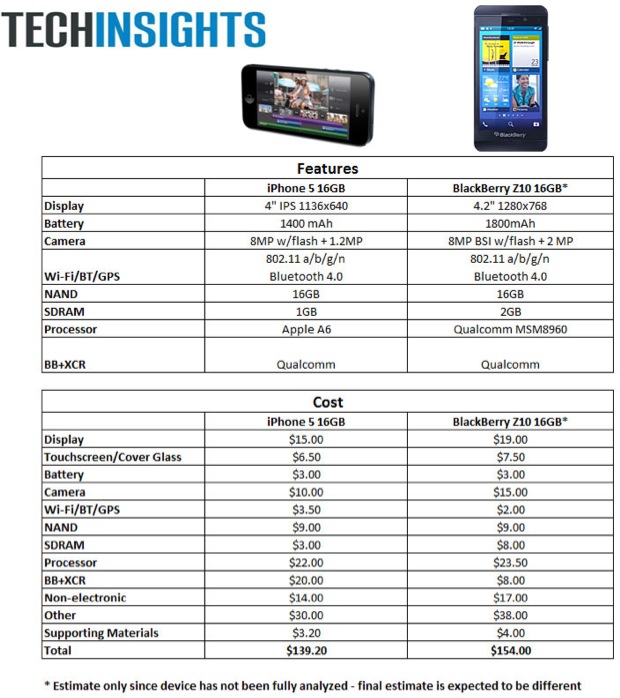BlackBerry Z10 teardown reveals a higher BOM than Apple's iPhone 5

It appears that BlackBerry spared no expense when it came to choosing high-spec, quality components for its new flagship Z10 handset, with a teardown revealing a bill of materials—otherwise know as the BOM—for the smartphone coming in a few dollars higher than that of the iPhone 5.
The teardown, carried out by UBM TechInsights, goes through the list of components, attaching a price tag to each. For example, the Qualcomm MSM8960—Snapdragon S4—processor comes in at $23.50, the display is an additional $19, while the 16GB of NAND storage adds $4.
The teardown also reveals that Qualcomm is the biggest winner inside the Z10, having grabbed four major socket wins—processor, audio codec, power management, and cellular radio chip.
From a spec sheet point of view, the Z10 has the iPhone 5 beaten in a number of categories. The display has a higher resolution, the 8MP camera features backside illumination (BSI), the front camera is a 2MP unit as opposed to 1.2MP, and the handset has twice as much RAM.
The total BOM for a 16GB Z10 is estimated to be $154, compared to $139.20 for a 16GB iPhone 5.

One standout from the teardown is how similar BlackBerry's Z10 is to Samsung's Galaxy S III.
"All in all," notes TechInsights, "the Blackberry Z10 seems to incorporate many of the component selections of the Samsung Galaxy S3 LTE. It's not certain if these decisions the designers made on what semiconductors, ICs and other modules to use were by design or by accident."
But it's not all good news for the Z10.
The teardown report highlights how "nothing in particular stands out as innovative about this device handset" and that the Z10 "lacks some key apps such as Netflix, Instagram, and others that the average person would want in a phone right out of the box."
As Apple has clearly demonstrated with the iPhone, it's not a spec sheet that sells a device, but a buoyant app ecosystem that handset owners can leverage to make their smartphone unique to them. And it still remains to be seen whether BlackBerry can nurture and build a compelling app ecosystem.